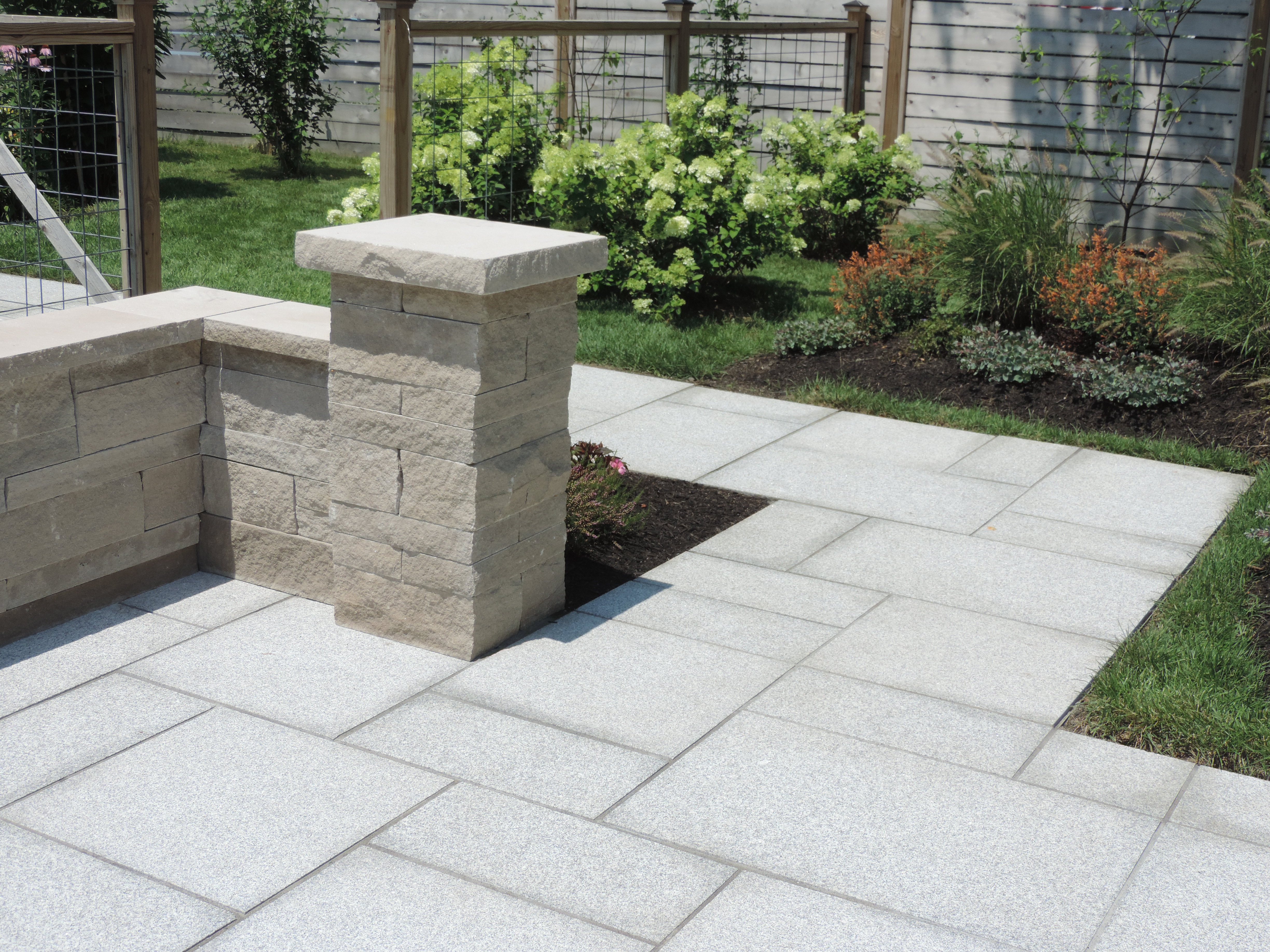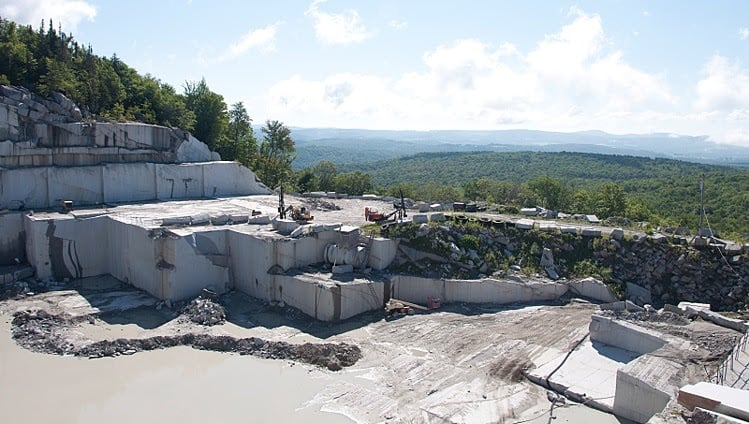The Rich History and Promising Future of Eastern Gray Granite
With its distinctive salt-and-pepper coloring and classic American good looks, EASTERN GRAY™ granite — quarried in New England — has brought timeless style to buildings across the country for over a century and reflects the natural beauty of North America’s eastern sea board.
One of Polycor’s most enduring natural stones, Eastern Gray granite may be a local stone — pulled from multiple quarries east of the Mississippi River — but it’s anything but ordinary. With its tight grain and consistent coloring, the stone is versatile enough to be used as the steps for a farmhouse front entryway or for Pennsylvania’s state capitol building.
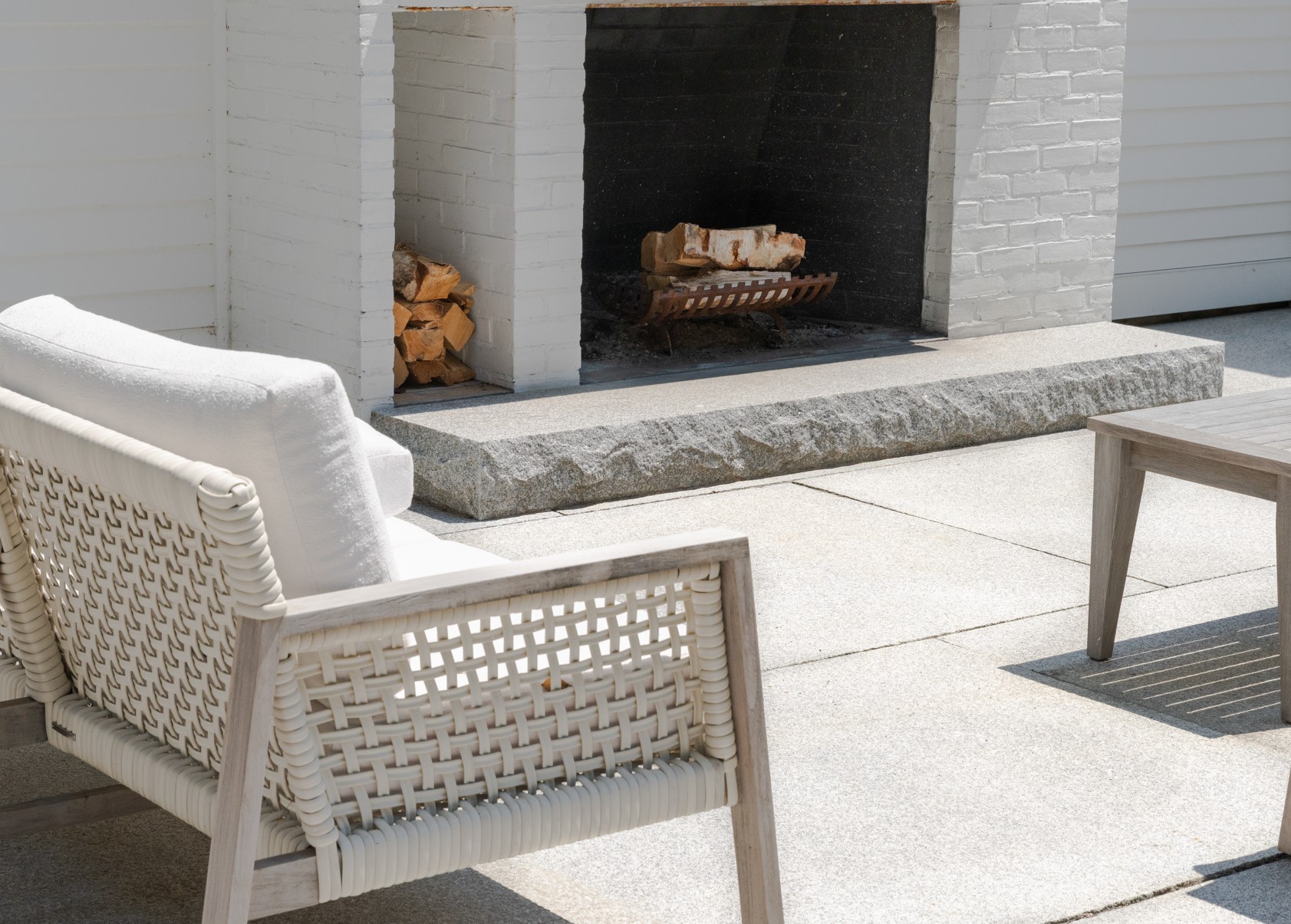 Eastern Gray granite slab pavers and hearth
Eastern Gray granite slab pavers and hearth
Polycor is the world’s leading natural stone quarrier with a core mission to make people fall in love with natural stone, and they are constantly evolving and looking for new ways to innovate timeless materials. The company’s world-class reputation comes from a great legacy of stone work on historic landmarks, institutional, commercial and residential projects.
GRANITE IS FOR NATURE LOVERS
When you think of New England states, what comes to mind? Autumn’s changing leaves. Miles of ski and hiking trails. Syrup pouring out of maple trees. Whatever vision you conjure, chances are it’s framed by these state’s natural beauty, several of which take their names from the mountain ranges that run the lengths of the states. When he created a map in 1647 of areas in Vermont, French explorer Samuel de Champlain dubbed the range “Verd Monts” or “Green Mountains.”
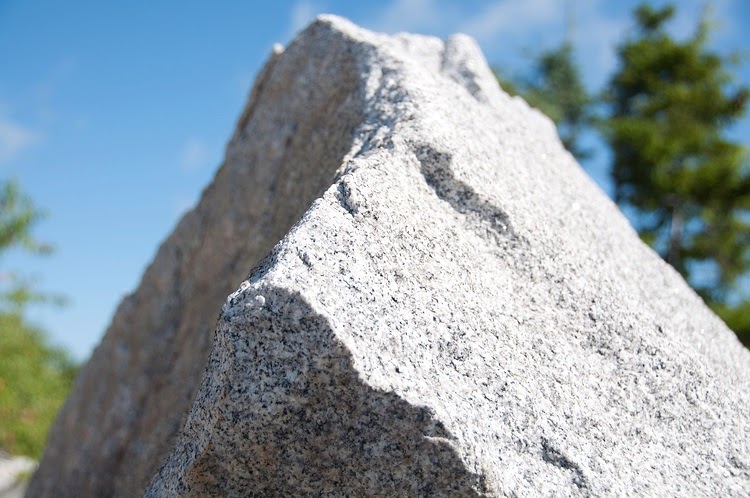
So it stands to reason that these states, renowned for their natural beauty, would produce a stone as timeless and durable as Eastern Gray granite.
THE HISTORY OF EASTERN GRAY GRANITE
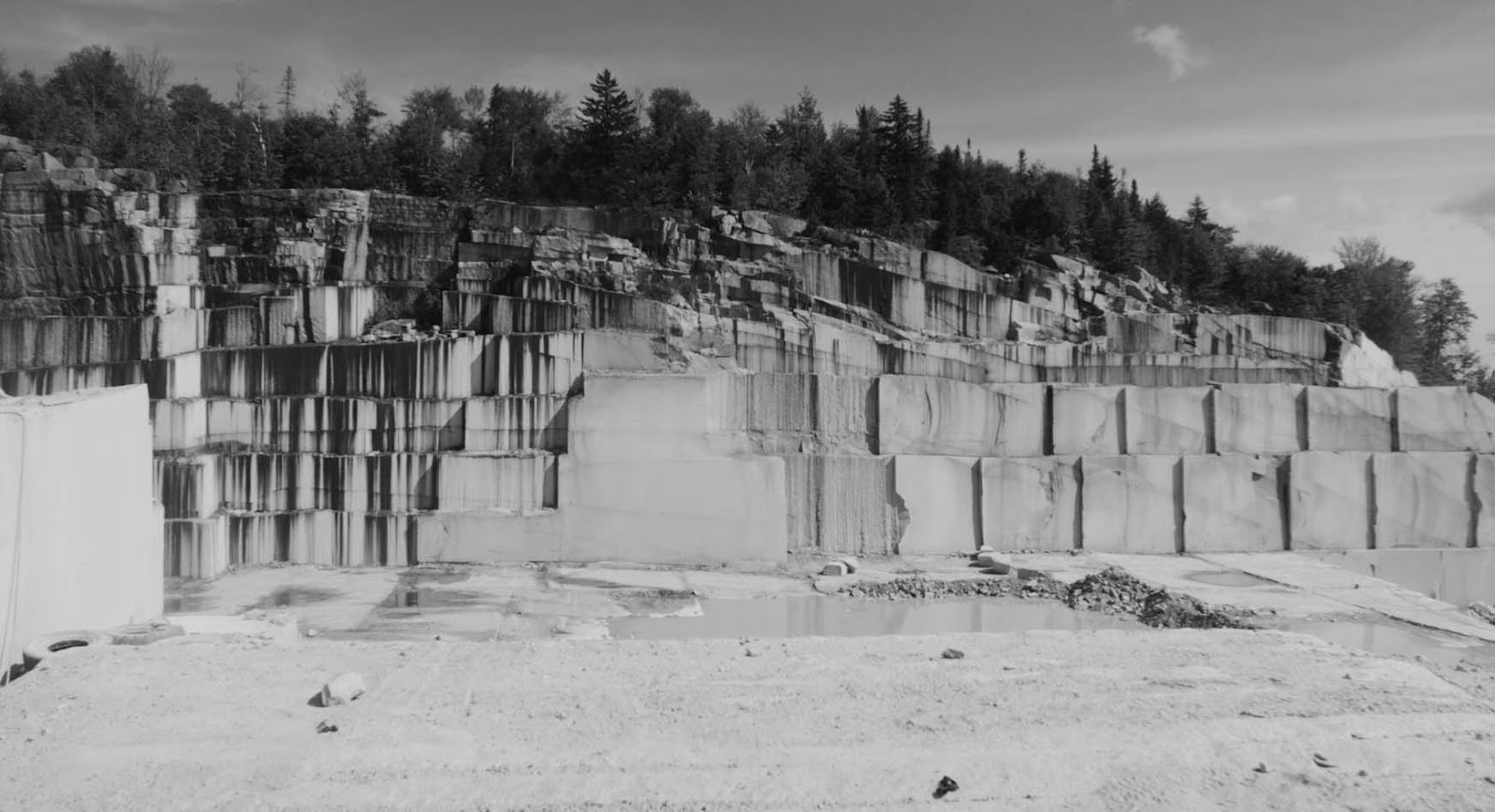
Discovered by the nation’s early settlers in the 1800s, the deposits of granite found in the ground were immediately used as a building material. “Early quarrying tools were crude and the work was laborious,” according to the Vermont Department of Tourism and Marketing. “A star drill–a metal rod with a pointed end looking like four joined chisels—could be struck with a heavy sledge… to form a series of shallow holes to be filled with black powder and detonated.”
Another quarrying method took advantage of New England’s seasons to remove stone. Pieces of wood were soaked in water, then inserted into holes in the granite. In the winter, the wood would freeze and expand, leaving large cracks in the granite.
Weighing around 172 pounds per cubic foot, removing Eastern Gray granite without modern machinery was no small feat. The 1870s introduced steam-powered drilling equipment, a powerful and efficient alternative to hand tools, leading to the rapid growth of the region’s granite industry.
Over time, granite gained popularity across the country and the state’s stone industry grew rapidly.
THE EXTRACTION PROCESS
These days, granite extraction is accomplished by advanced machinery and tools that make precise extraction easier. We start by drilling pilot holes and then use diamond wire saws, which are extremely long plasticized wires with metal junctions fitted with crushed diamonds —the hardest naturally occurring substance on earth.

The wire is wrapped around a series of idler wheels powered by a motor, making the wire travel at around 3,937 ft. per minute to cut the granite. One of two techniques is used to tip the blocks down so that the loader can carry them away.
One is by attaching a long steel armed tool wheel loader that pushes the block until it tips forward. Dust and dirt are piled up under the falling stone to absorb the impact.
The other clever option uses a simple bag, similar to an ordinary zip lock bag, but much larger and made from metal. This bag is inserted in the cut created by the wire saw and then filled with water or air. The expanding bag then generates enough pressure on the walls to tip the block.
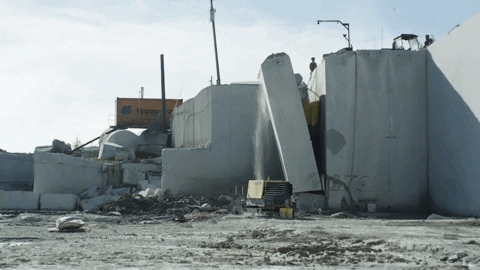
EASTERN GRAY GRANITE: ONE OF THE COUNTRY’S MOST ICONIC BUILDING FACADES
This natural stone, with its distinct light gray, consistent color and tight grain, has brought timeless style to buildings across the country for over a century.
CHICAGO CITY HALL BUILDING
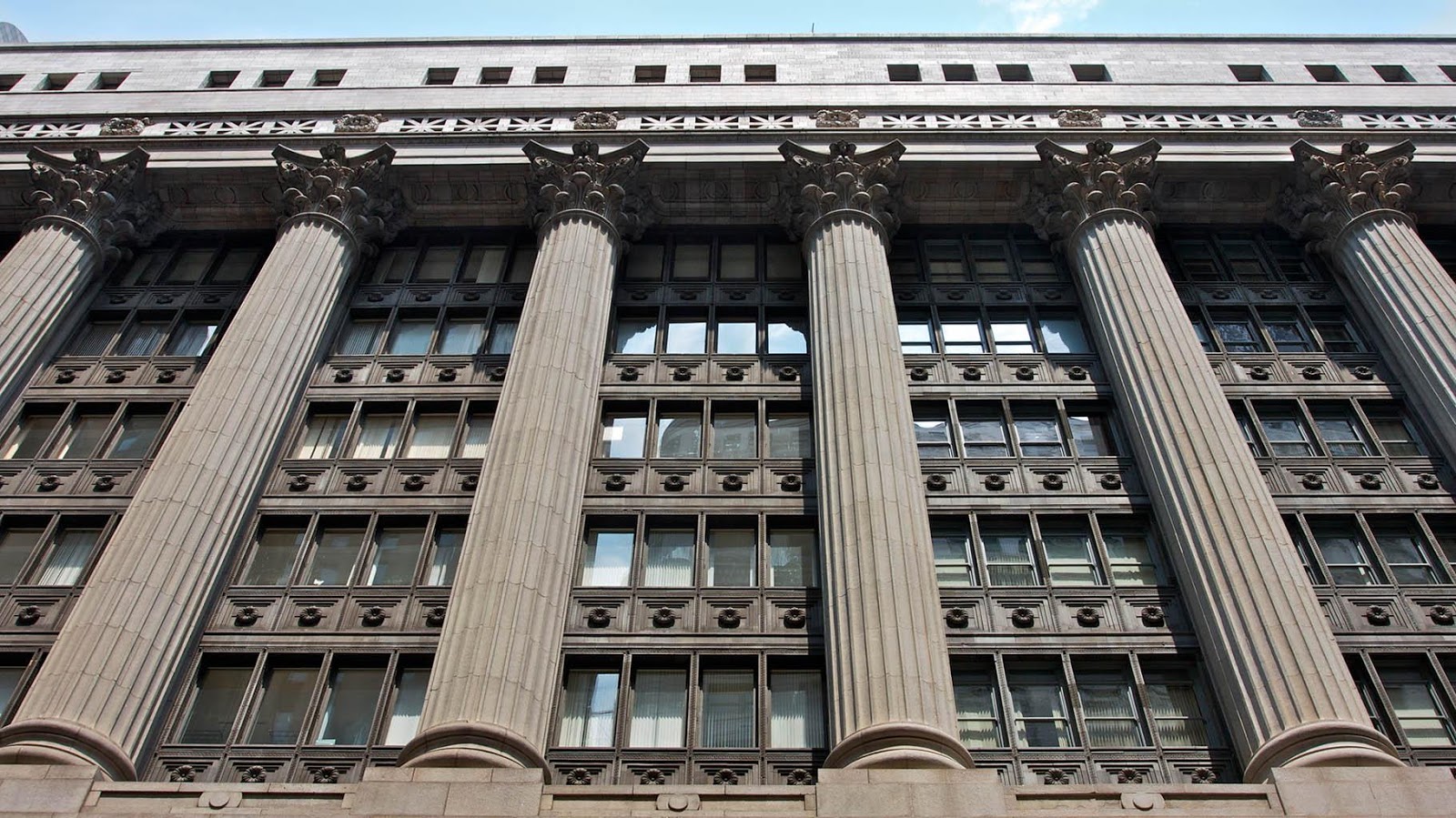
The imposing classical revival structure that serves as the center of the city’s government is actually the seventh iteration of the building. The first six, designed in a variety of architectural styles, were destroyed by everything from the Great Fire in 1871 to a sinking foundation and explosion due to a gas pipe rupture. The structure that stands today combines classical architectural details — like its colonnade of Corinthian columns and Woodbury Gray granite and terracotta facade — creating an exterior that looks back to ancient times.
CLEVELAND CITY HALL BUILDING
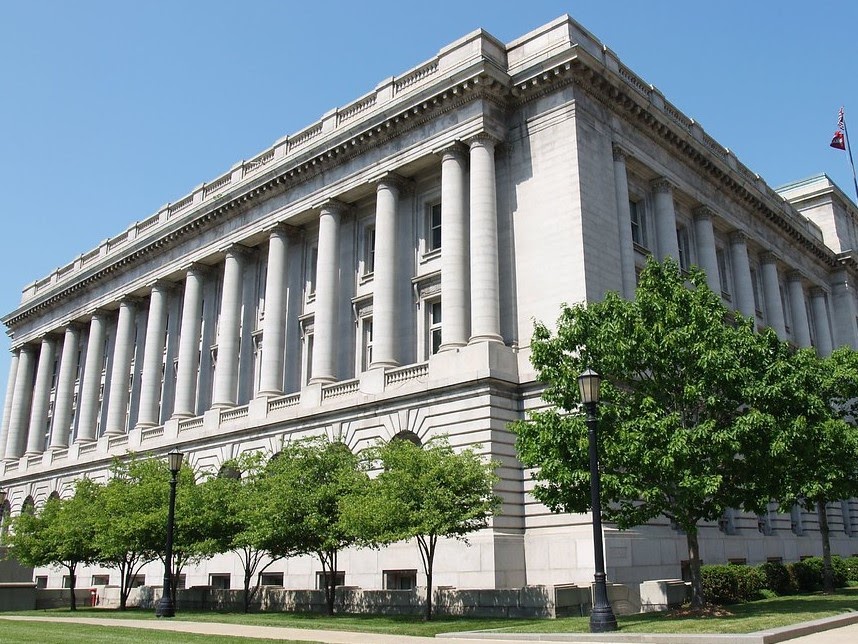
Today’s Cleveland City Hall building, dedicated on July 4, 1916, is a far cry from the log cabin that served as a meeting space for the earliest township government. The structure, which is placed in symmetry with the county courthouse at the north end of the downtown Mall, boasts exterior walls of Eastern Gray granite and a two-story Tuscan colonnade.
PENNSYLVANIA CAPITOL BUILDING

Perched on a hill facing toward the Susquehanna River, the capitol building in Harrisburg is home to Pennsylvania’s state government. In 1903, the Eastern Granite Company agreed to supply granite for the structure, which was the largest building granite contract ever offered at the time. According to the Vermont Historical Society, “The company was…obliged to produce 400,000 cubic feet of granite, quarried, cut, delivered, and set in place in two years, a requirement that was regarded by the industry as impossible to meet.”
BANKERS TRUST BUILDING ON WALL STREET, NYC
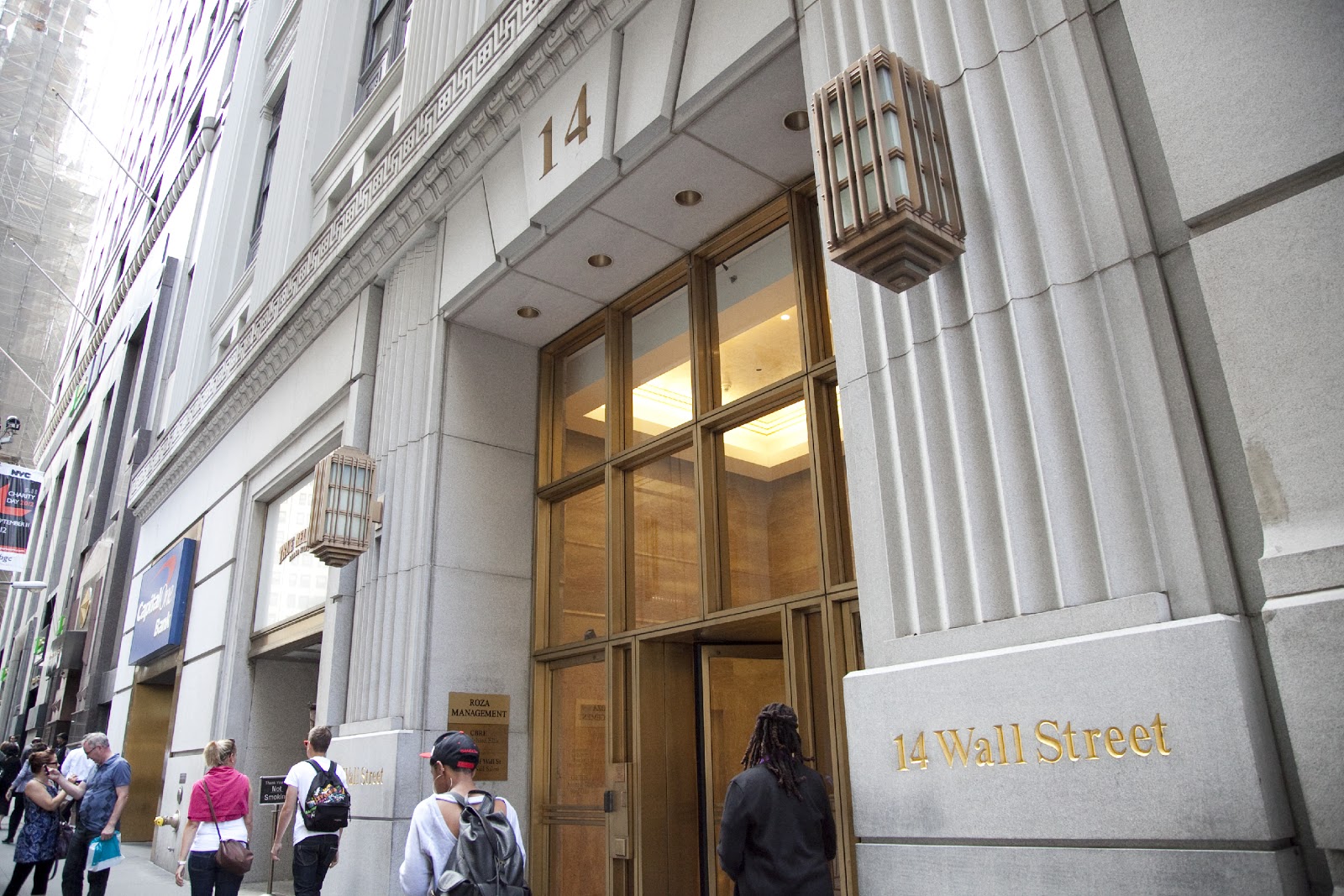
Located on one of the most famous intersections in business history, the Bankers Trust Building office tower is cloaked in Eastern Gray granite’s distinctive light gray, much like formal business attire. Now known as 14 Wall Street, the building’s pyramidal roof was a notable building in Manhattan’s skyline in the early 20th century.
Whether it’s used as a backyard patio paver or climbing up one of the country’s most iconic building facades, Eastern Gray granite brings a classic sensibility and endurance that reflects the beauty of the state from where it’s pulled.
